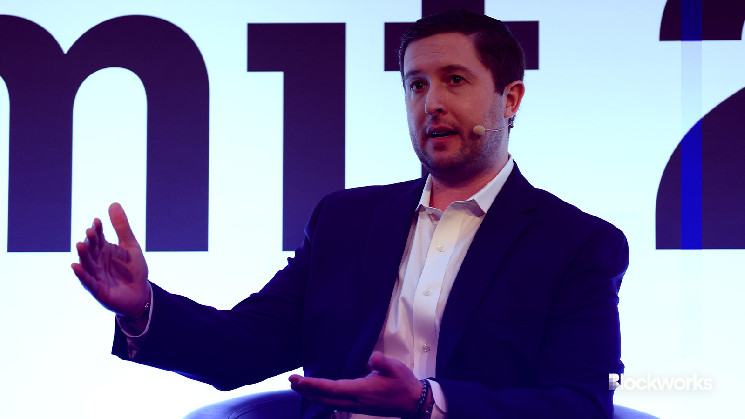Grayscale Investments is taking a page from the playbook of its biggest bitcoin ETF competitor with its “Mini,” cheaper version of GBTC.
While this strategy may not work as well as BlackRock’s past comparable actions in other ETF segments, the new Grayscale fund could gain assets quickly, industry watchers said.
Grayscale’s status in the bitcoin ETF category is a bit nuanced.
The crypto asset manager won a court case against the Securities and Exchange Commission last year that helped lead to the regulator’s approval of such funds.
On top of that, the company’s Bitcoin Trust ETF (GBTC) has the most assets under management — at least for now.
BlackRock’s ever-growing iShares Bitcoin Trust (IBIT) had about $18.2 billion in assets as of Tuesday, which was second only to GBTC’s asset base of $20.2 billion. The Fidelity Wise Origin Bitcoin Fund (FBTC) has roughly $10 billion in assets.
That said, investor money continues to leave GBTC, which holds a higher-than-competitors’ fee of 1.5%. The fund has notched net outflows on every trading day since converting to an ETF on Jan. 11 — amounting to $16.8 billion, according to Farside Investors data.
Read more: Bitcoin ETF snapshot: GBTC drives second straight week of outflows
Now, Grayscale is proposing to launch a Bitcoin Mini Trust (BTC) — and yes, that’s the correct proposed ticker.
As part of a “spin off” mechanism unique to commodity ETFs, GBTC would seed BTC, according to Grayscale. A percentage of the flagship fund’s bitcoin holdings would be allocated to the new offering, the company added.
Grayscale is also seeking to offer two types of ether ETFs with similar differences, the company said in a Tuesday blog post.
Understanding the strategy
Why launch a totally new fund instead of just lowering GBTC’s 1.5% fee?
A Grayscale spokesperson did not immediately return a request for further comment on the strategy.
But segment observers have noted the wider set of allocators Grayscale can appeal to by adding another fund.
Neena Mishra, director of ETF research at Zacks Investment Research, noted that GBTC could remain popular with traders due to its liquidity, while BTC will be favored by long-term, buy-and-hold investors.
“At some point GBTC’s bleeding will stop, as a significant portion of its assets is reportedly in taxable accounts,” she told Blockworks. “Grayscale can therefore use GBTC’s revenues to subsidize BTC.”
Ben Johnson, Morningstar’s head of asset management client solutions, addressed this type of strategy in a December 2017 research note about a separate fund segment.
BlackRock’s iShares MSCI Emerging Markets ETF (EEM) launched in 2003. Rival fund group Vanguard came out with a much cheaper fund offering exposure to emerging markets stocks — the Vanguard FTSE Emerging Markets ETF (VWO) — about two years later.
In response to Vanguard undercutting EEM — albeit years later after EEM lost significant ground to VWO — BlackRock in 2012 debuted the iShares Core MSCI Emerging Markets ETF (IEMG). The fund, which tracked a broader index, was priced at 0.18%, compared to EEM’s 0.68%.
The launch of IEMG was “effectively an attempt by BlackRock to have its cake and eat it, too,” Johnson wrote at the time.
“Rather than slashing the fee on its existing multibillion-dollar fund and forgoing millions in fee revenue, it was splitting its current and prospective clientele in two,” he added. “Long-term investors tend to have a strong preference for broad diversification and low fees. Short-term traders command greater liquidity.”
Today, the first, more expensive emerging markets ETF, EEM, has $16.6 billion assets under management, according to ETF.com data. IEMG and VWO each have roughly $74 billion in assets.
Similarly, BlackRock launched the iShares MSCI EAFE ETF (EFA) in 2001 before launching the cheaper iShares Core MSCI EAFE ETF (IEFA) in 2012. EFA, which today has an expense ratio of 0.35%, has $50.8 billion in assets. IEFA, which carries a 0.07% fee, manages $110.8 billion.
While not quite as successful as IEMG and IEFA, a “mini” version of the first physically backed gold ETF gained significant assets.
State Street Global Advisors, which launched SPDR Gold Shares (GLD) in 2004, brought to market a cheaper SPDR Gold MiniShares Trust (GLDM) in 2018. GLD and GLDM have $63.6 billion and $7.6 billion assets under management.
Could Grayscale see similar results?
Johnson told Blockworks that he doesn’t expect this strategy to be nearly as successful for Grayscale as it was for BlackRock.
The historical success for the world’s largest asset manager was due to “cleanly segmenting its clients” into two categories: benchmark-sensitive, liquidity-demanding owners of a fund like EEM and price-conscious buyers of the cheaper alternative, he explained.
“In the case of GBTC and BTC, there are already abundant low-cost options with significant assets under management and oodles of liquidity — all of which offer exposure to the exact same asset,” Johnson added.
Still, Mishra pointed to GLDM’s ability, for example, to gain billions of dollars in assets. A cheaper version of Invesco’s QQQ has $22 billion — a high mark that she called “very successful” despite representing less than 10% of the assets in QQQ.
Read more: ‘Primary market’ for bitcoin ETFs largely hasn’t yet adopted such funds
“It is quite likely that BTC will also be able to quickly gather assets,” Mishra added. “Furthermore, it will be seeded with a portion of GBTC’s assets.”
Grayscale gave BTC a hypothetical sponsor fee of 0.15% based on unaudited pro forma financial statements, according to a recent filing. Such a fee would make it the cheapest spot bitcoin ETF available, barring temporary fee waivers.
“While a few [basis points] worth of fee edge versus the incumbents certainly can’t hurt BTC,” Johnson said, “it’ll be playing catchup with the IBITs and FBTCs of the world who have gotten a big head start.”

